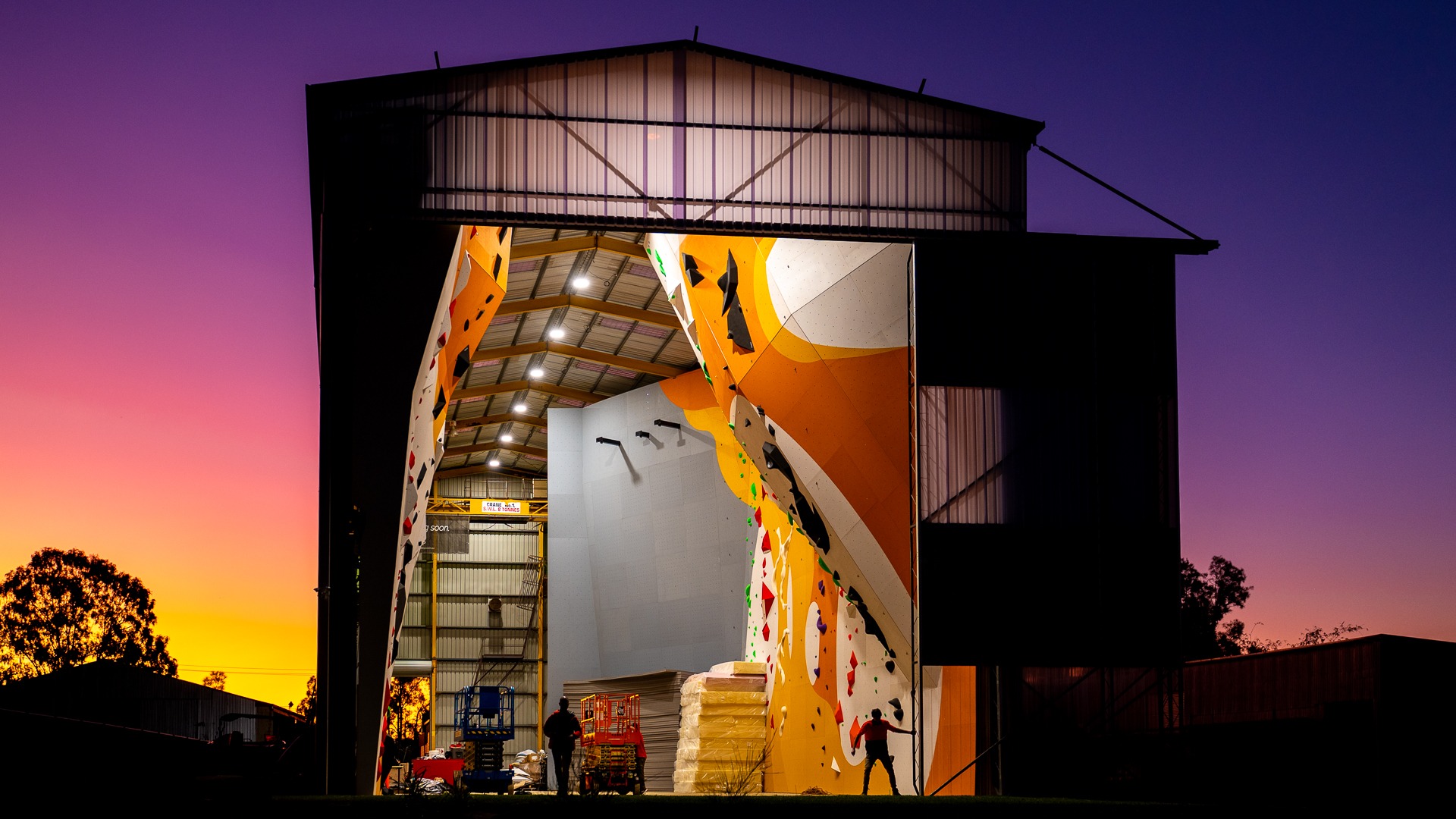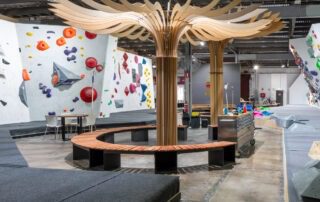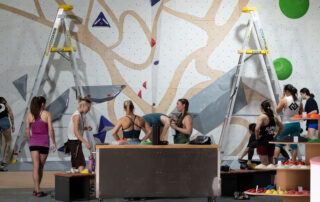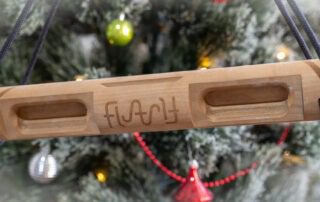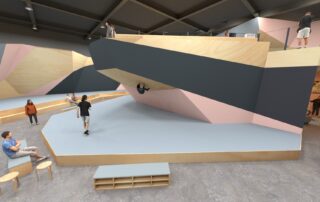Climbing gyms have become a hub for enthusiasts to challenge their physical and mental limits, fostering a sense of community and adventure. Amidst the vertical challenges, one often overlooked element plays a crucial role in enhancing the climbing experience – lighting. The right lighting not only ensures safety but also contributes to the aesthetics of the climbing environment. In this article, we’ll delve into the importance of lighting in climbing gyms, exploring aspects such as color, types of lighting, issues of mixed lighting, and recommendations for creating an ideal climbing atmosphere.
The Colour of Light and it’s Impact
The colour of lighting in climbing gyms is more than just an aesthetic choice, it holds the power to shape climbers’ performance and enhance their overall experience, particularly when tailored to mimic outdoor conditions to create a natural environment. Ask any photographer what colour the sun’s light is and they will tell you it depends on the time of day and the conditions. “Warm lighting, with its yellow and orange hues, found at sunrise and sunset, can create a cozy and inviting atmosphere, promoting relaxation and social interaction. On the other hand, cool lighting found on cloudy days and featuring blue and white tones, tends to energise and enhance focus, which can be beneficial during intense climbing sessions. We believe neutral pure white lighting at 5,500 Kelvins is the best option for climbing gyms, not only for its optimal visibility but also for its ability to provide excellent lighting conditions for customers’ photos and videos, helping to promote your gym in a better light.
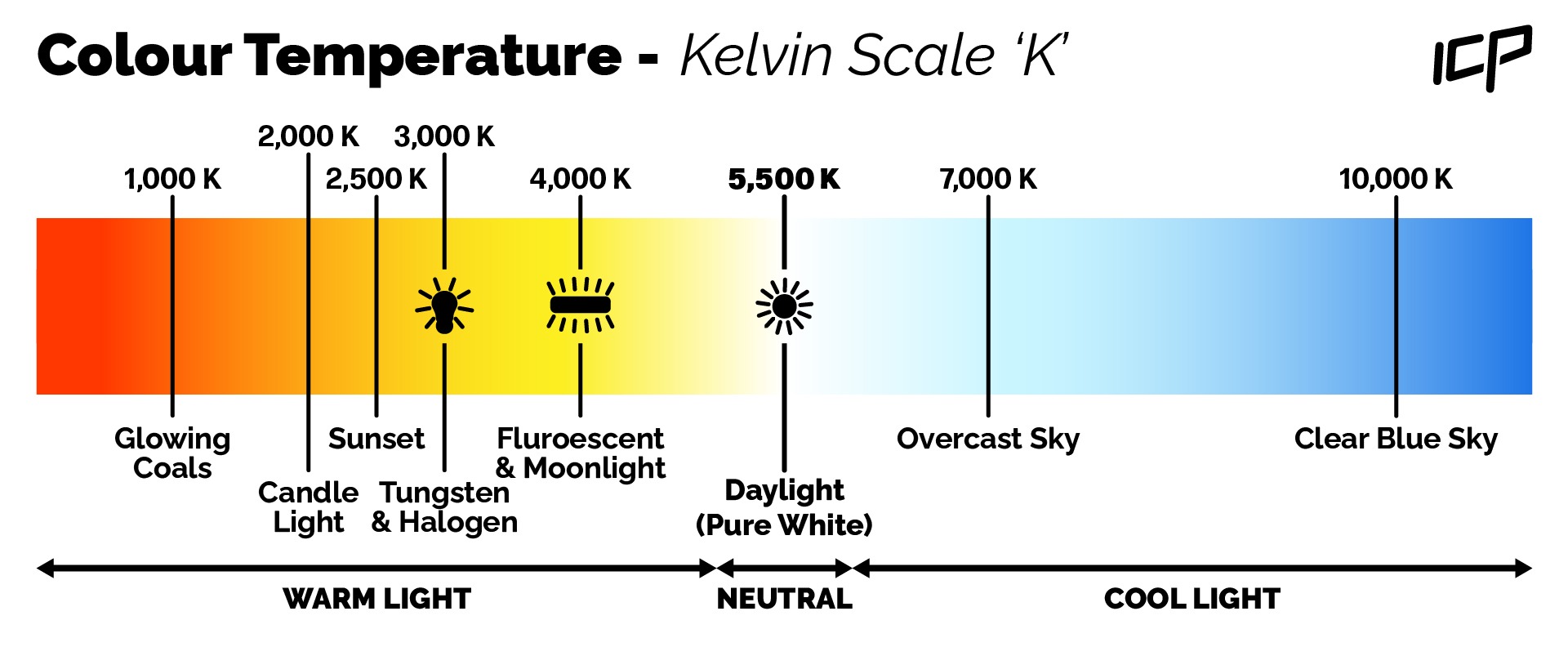
The Kelvin scale measures the colour temperature of light sources, with lower values indicating warmer tones (e.g., yellowish) and higher values denoting cooler tones (e.g., bluish), influencing the perceived ambience and functionality of lighting.
Issues with Mixed Lighting
Mixed lighting, where different light sources with varying colour temperatures are used, can pose challenges in climbing gyms. Inconsistent lighting can create colour imbalances which will impact the overall ambience, and the quality of photos and videos taken in the gym, making it difficult to capture the true essence of climbs. It’s best to make all your lights one type of light source and one colour temperature. Having mixed lights with different colour temperatures will cast very distinctive and unwanted colour differences on your walls. To avoid mixed lighting issues, gyms should strive for uniformity in colour temperature across all light sources.

- The image above shows an issue with mixed lighting in gyms, the 2 lights on the left are pure white LEDs and the light on the right is a Metal Halide bulb. You can see the Metal Halide is casting yellow/green imperfections on the wall.
Common Types of Lighting.

Incandescent/Halogen Lightbulbs
Incandescent lighting has been a longstanding choice for many indoor settings due to its warm, inviting glow and low initial cost. Its simplicity and ease of installation make it accessible for various applications, including climbing gyms. However, incandescent bulbs are highly inefficient, converting much of the energy they consume into heat rather than light. This inefficiency results in higher energy bills and shorter lifespans for the bulbs, necessitating frequent replacements. With most gyms having high ceilings, you wouldn’t want to have to change these as regularly as you need to.
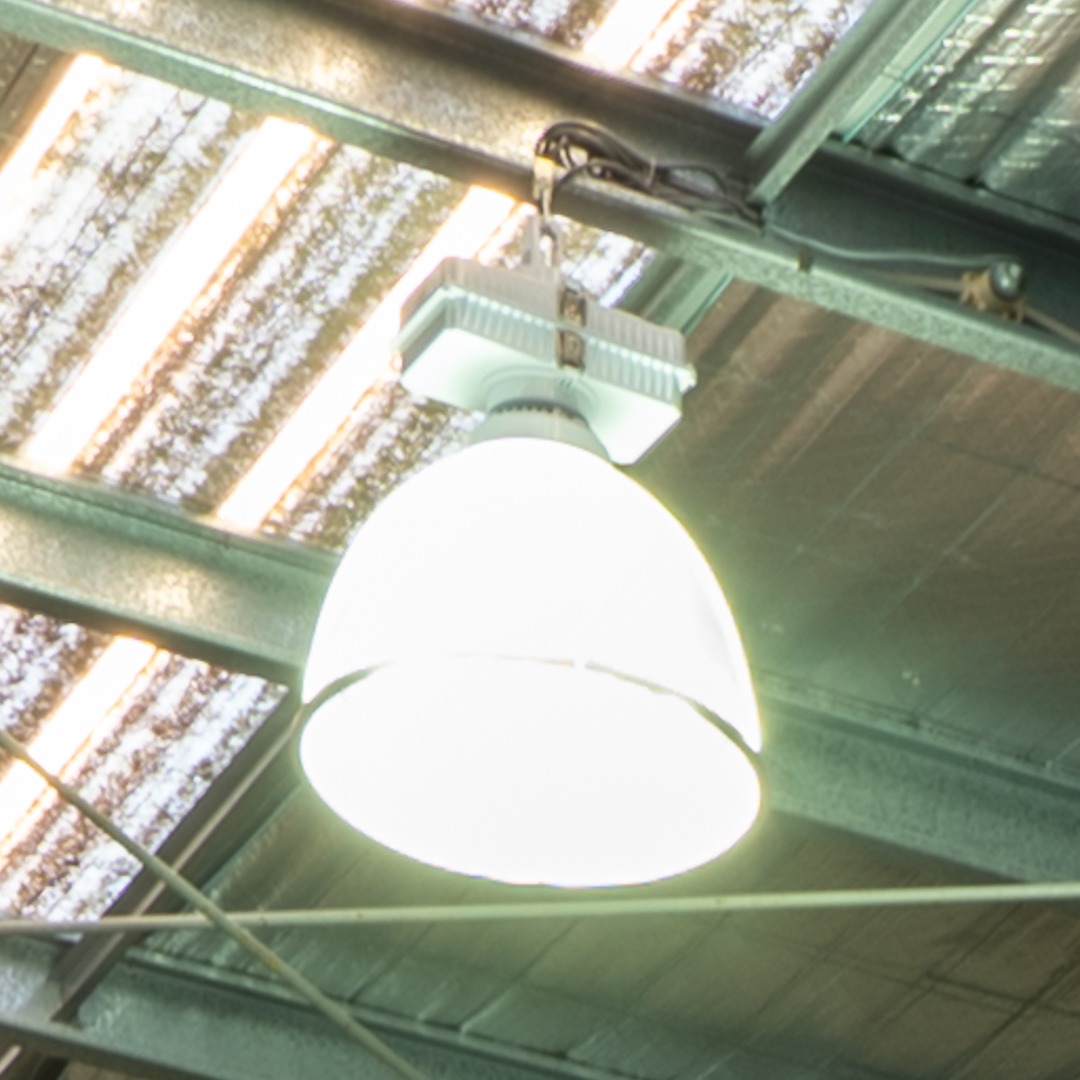
Metal Halide High Bays
Metal Halide lights are commonly found in warehouses. Although these lights are more energy-efficient than traditional incandescent bulbs, they are much more expensive to run than newer LED light technology and the bulbs don’t last as long. These lights have a warmup and restart delay period and create a high-pitched humming noise, which is not great when shooting video. They also emit UV radiation which will contribute to colour fading in the wall’s paint job and your holds. The biggest issue with these lights is their colour, as the bulbs age the colour of these lights changes, so no two bulbs will be the same, creating mixed light issues. There is also a noticeable green tinge to these lights which casts sickly green spots on your climbing walls.
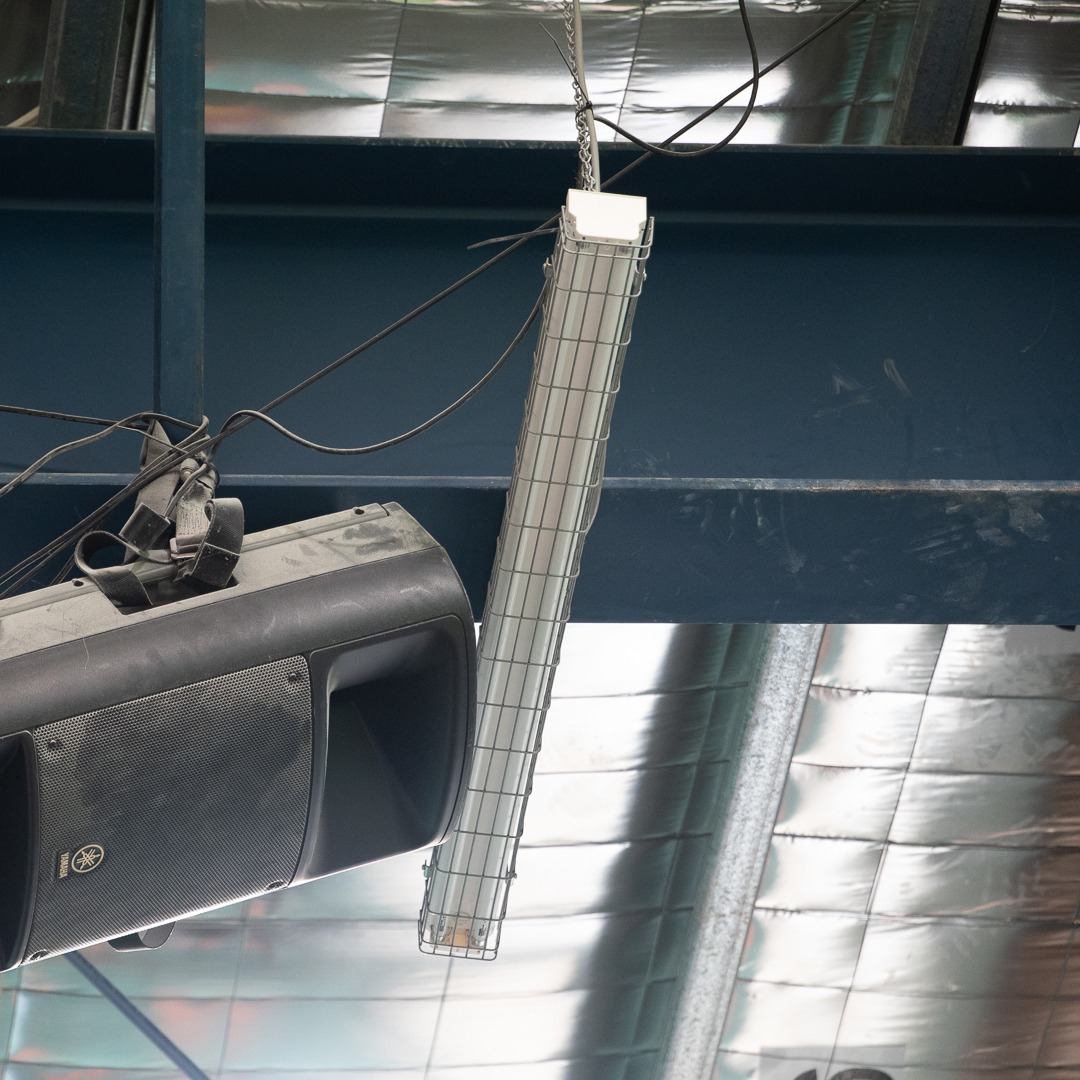
Fluorescent Tube Lights
Fluorescent tube lighting offers a more energy-efficient alternative to incandescent bulbs, but are still much more expensive to run than LED lights. Fluorescent lights have their drawbacks. They can produce a flickering effect, which may cause discomfort or eye strain for some individuals and is horrible for shooting video. Additionally, it is a cool light that tends to have a green tinge to it as well. These bulbs also contain roughly 4 milligrams of mercury and are not great for the environment. The lights can also be noisy and have a general hum.
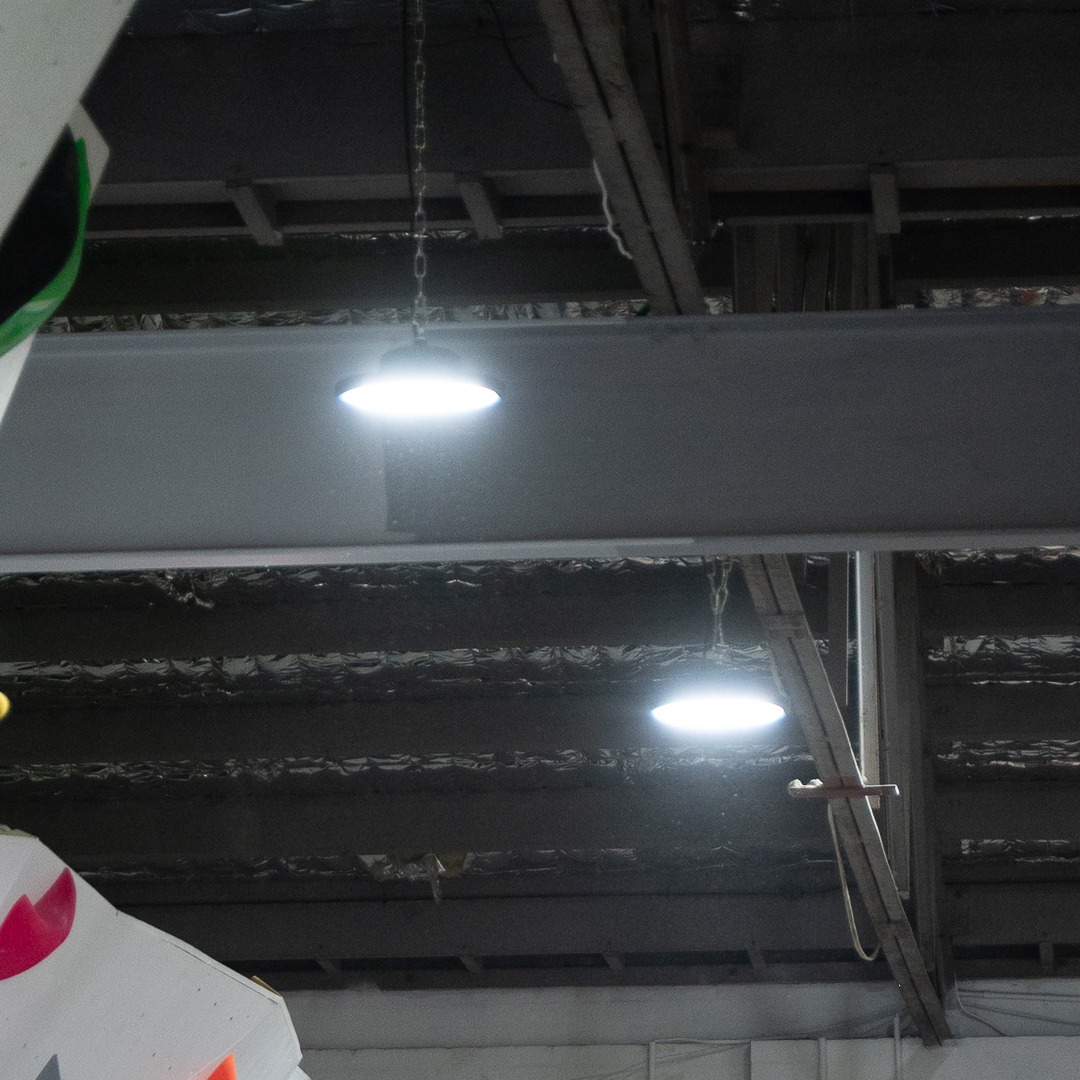
LED Lights
LED lighting offers advanced versatility for illuminating climbing gyms. Highly energy-efficient, LEDs consume up to 80% less energy than incandescent bulbs, lasting longer and reducing maintenance costs. They emit minimal heat, maintaining a comfortable environment for climbers, and come in a variety of colour temperatures, including customisable and dimmable RGB options. Despite requiring a higher initial investment, the long-term benefits in energy savings, durability, and lighting quality make LEDs superior for climbing gyms. However, their rapid on/off cycle, faster than human perception, may cause flickering issues in cameras if there is an insufficient amount of light.
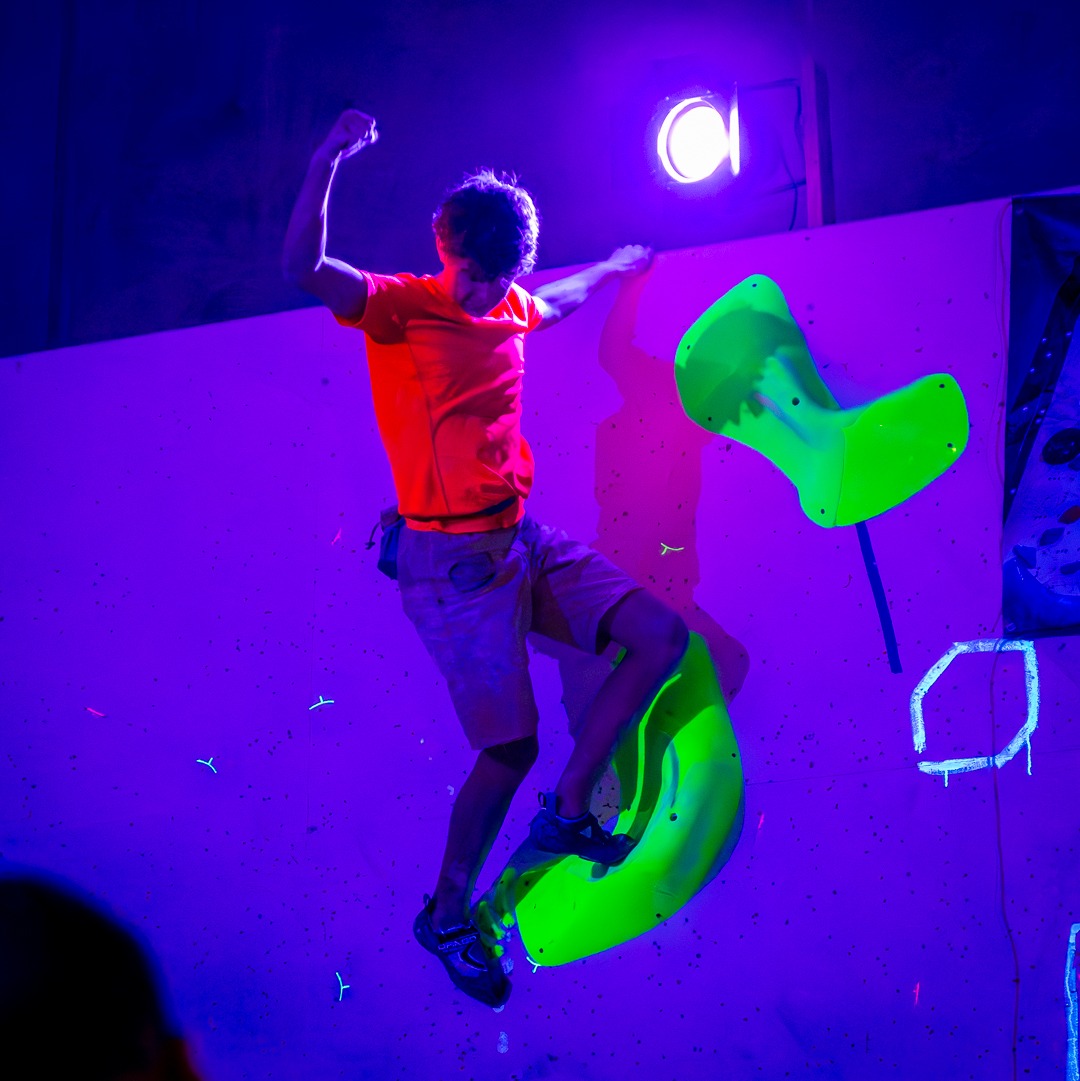
Black Lights
Black lights, or ultraviolet (UV) lights, offer a captivating addition to climbing gyms, particularly for special events and competitions. These lights emit UV radiation, causing certain materials to glow brightly, creating an otherworldly atmosphere. While blacklight competitions can add excitement to traditional climbing challenges by featuring fluorescent holds and routes, it’s essential to ensure that the holds are compatible with UV light. Black lights are most effective in dark environments with minimal ambient light, as other light sources can diminish their impact. Although thrilling for occasional events, black lights may not be suitable for everyday use in climbing gyms due to their specific lighting requirements and limited functionality in well-lit spaces.
How much light is enough?
Adequate lighting not only aids climbers in assessing routes and holds but is crucial for capturing movement in photography, resulting in more engaging photos and videos. Insufficient lighting can lead to blurred images and obscure details. For gyms with dark wood textures and dark paint finishes, it’s very important to have adequate light so the details on these darker surfaces are not lost. When selecting lighting fixtures, it’s essential to consider both the output and colour temperature of your lights. Lumens, which measure the total brightness emitted by a light source, provides a standard metric for assessing brightness. It’s hard to say what lumens is required in general but the more light the better. By utilising a light meter to test light levels on every wall, gym owners can ensure uniform illumination, enhancing safety and the overall climbing experience.
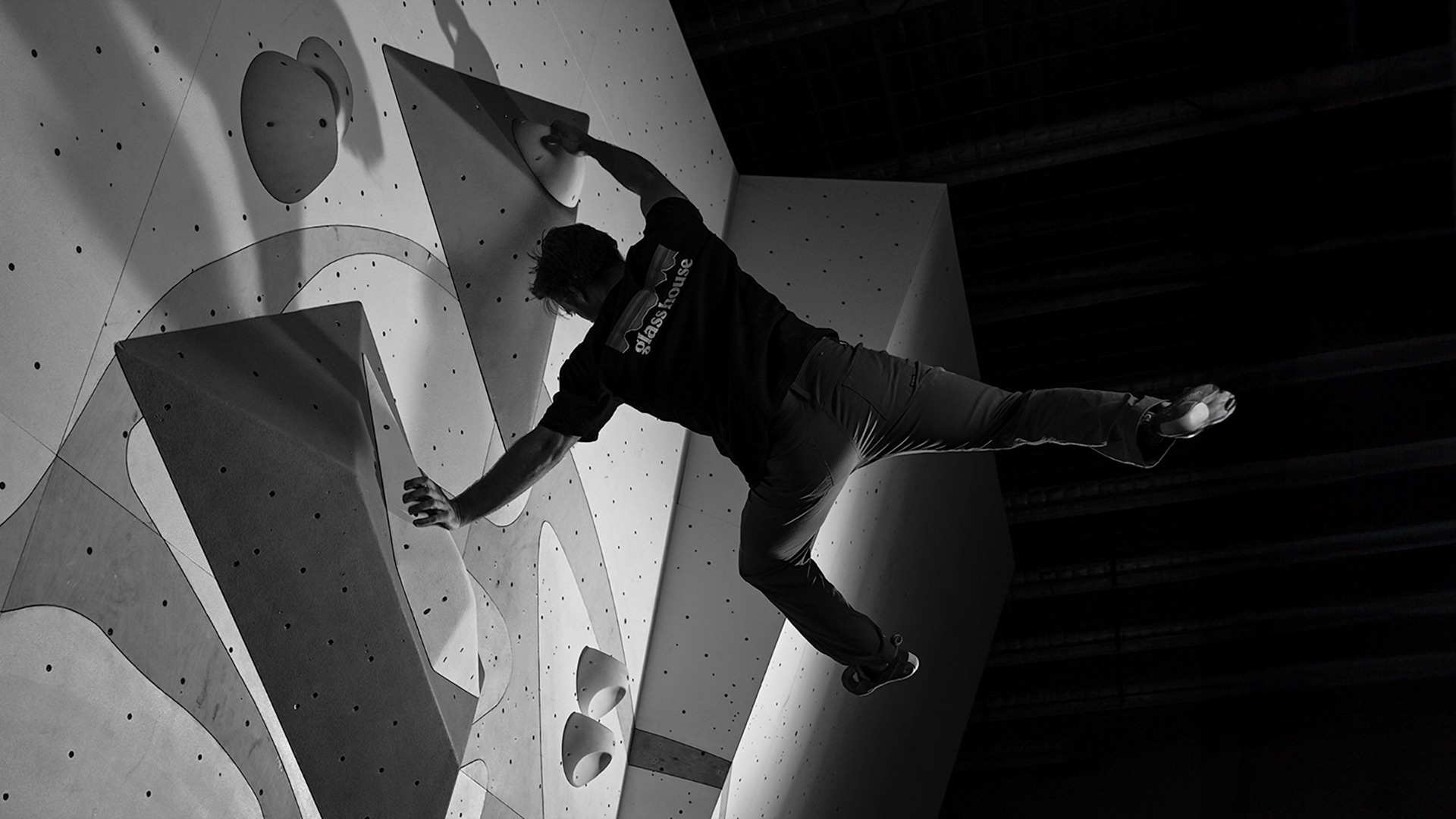
Light Quality: Hard vs Soft
Light quality is defined as hard or soft, and it significantly influences the ambience and functionality of a climbing gym. Light quality is defined by the size of the light, not to be confused with the output/brightness of the light. A small light source creates hard light, and a large light source creates soft light.
Hard light produces distinct, well-defined shadows and highlights. This type of lighting is ideal for showcasing texture and detail, aiding climbers in assessing the texture of the wall and holds. On the other hand, soft light produces gentle, diffused shadows and highlights, creating a more subtle and forgiving illumination.
Soft light can help minimise harsh contrasts and create a smoother, more uniform appearance, enhancing the overall atmosphere and visual comfort of the climbing environment. This is usually the lighting choice for portrait photography, as it usually smoothes out wrinkles, hides acne and highlights people’s eyes.
Generally, changing the size of the light source will change the quality of light. For instance, the sun is a small hard light (even tho we know it’s a giant star), and it creates very hard shadows. On a cloudy day, the clouds act as a diffuser, essentially becoming the light source, a very large one. You will notice on overcast days that the edges of your shadows become very soft and gradual. The further you move a light source away from its target, the harder it gets. To make a hard light source soft, you can modify it by moving it closer, bouncing it off a large white wall, or using a diffuser of some sort. White surfaces will reflect light, whereas dark surfaces will absorb the light. You can learn more about light quality here: Fstoppers.com
The below images were taken with the exact same settings in camera. As you can see, the lighter grey mats bounce light up onto the wall to make it lighter. The dark mat tops have absorbed the light making the image darker.
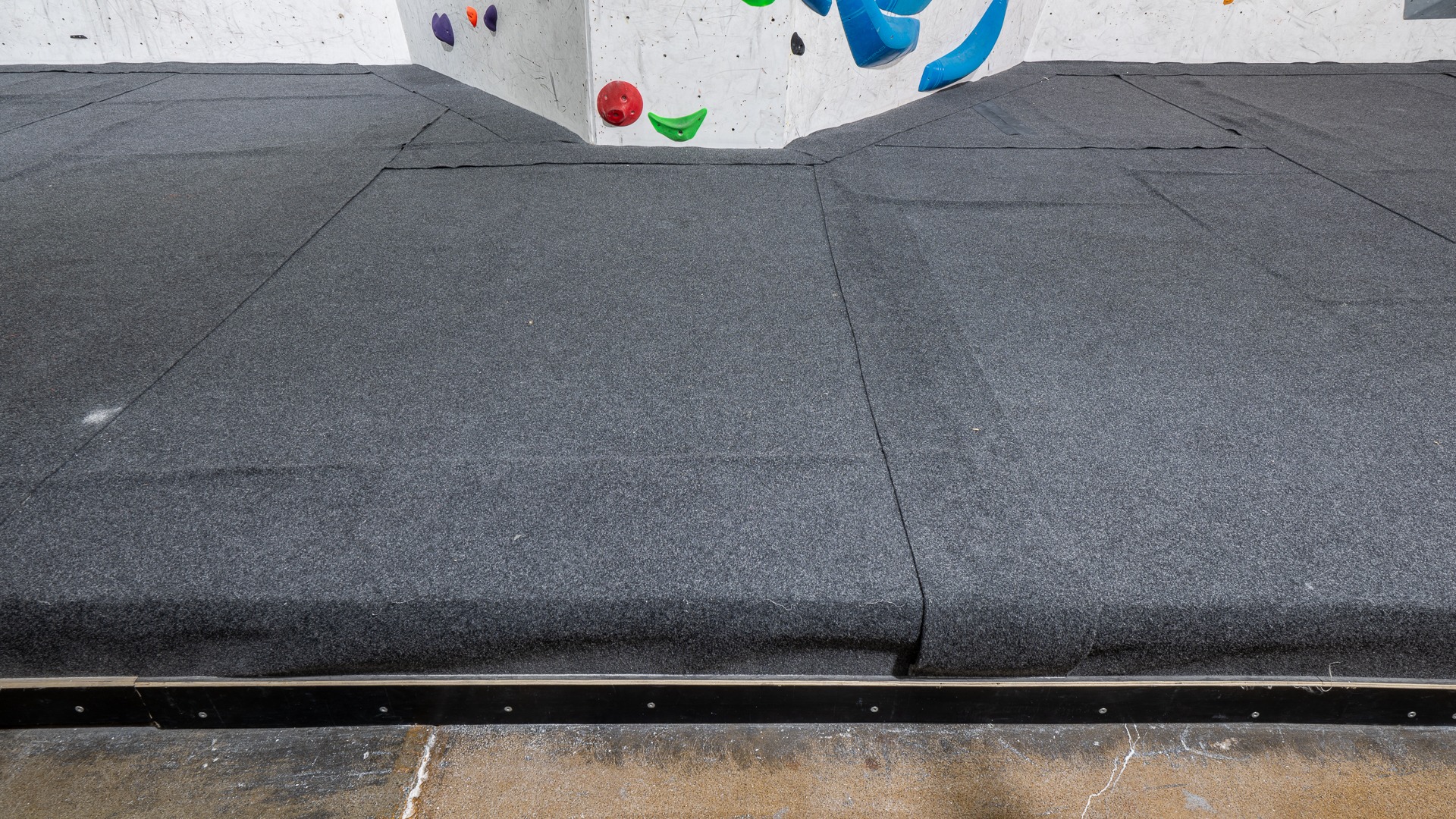
Darker mat surfaces will absorb light, not reflect it.
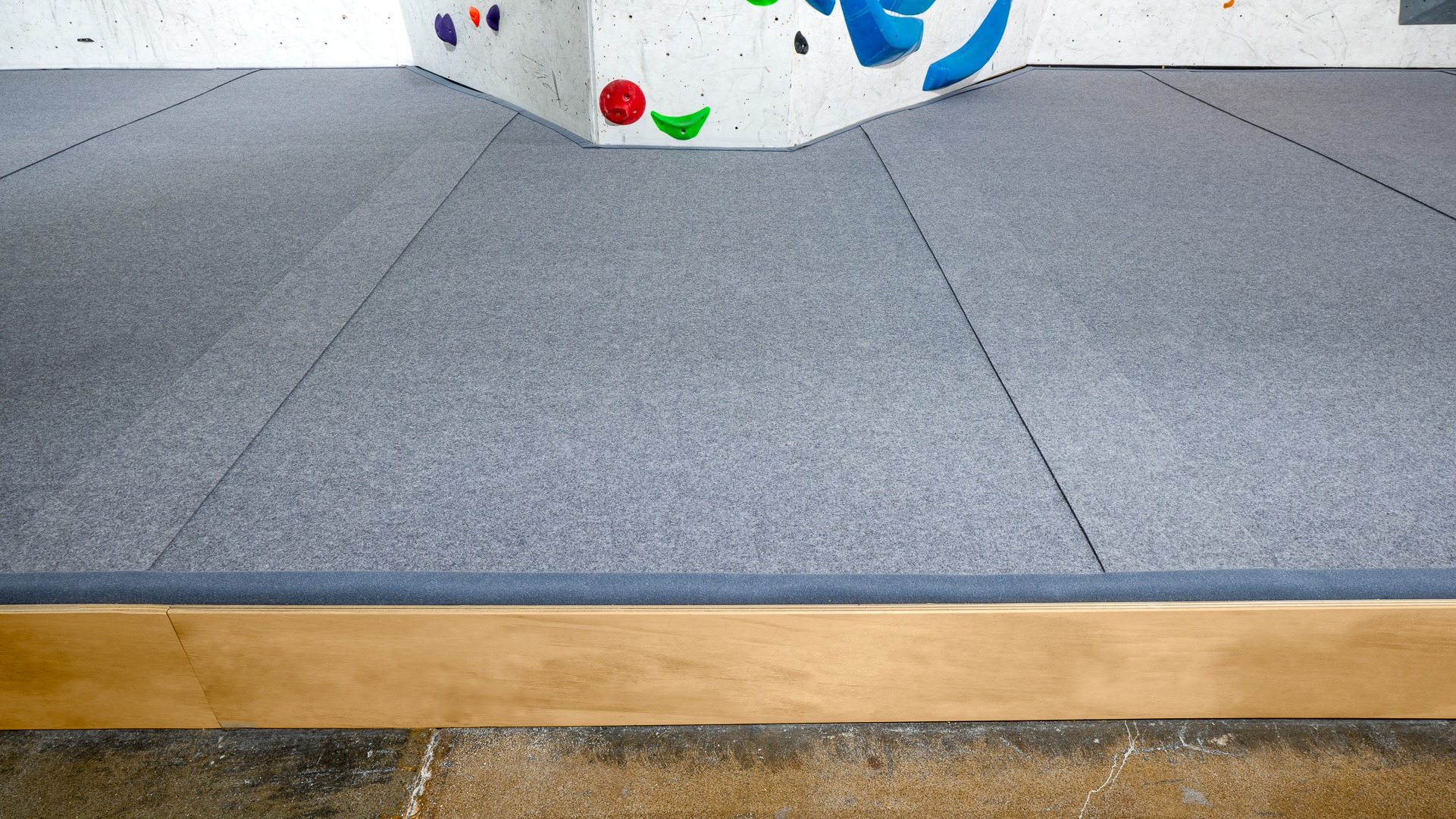
ICP Mats light grey colour helps bounce light back up onto the walls.
Positioning
The positioning, angle, and spread of lighting in a climbing gym significantly impact effectiveness and ambience. Strategic placement of lights ensures optimal coverage of climbing walls, minimising shadows and dark spots. Angling lights downward and away from climbers’ sight lines reduces glare, enhancing comfort and appeal. Uniform light distribution promotes safety and enhances the climbing experience. Using a light meter ensures even illumination across all surfaces, addressing dark spots. Careful consideration of lighting elements creates a safe and inviting environment, encouraging climbers to enjoy their experience.

The diagram above shows how lights with a spread of less than 90º can be used, tho it is not recommended.
Recommendations for Climbing Gym Lighting:
- Use LED Lighting:
- Opt for energy-efficient LED lighting throughout the climbing gym. LEDs offer longevity and a range of consistent colour temperatures, allowing gym operators to create a consistent lighting environment.
- Uniform Colour Temperature ( Preferably Pure White 5,500 K: )
- Maintain a consistent colour temperature across all lighting fixtures to ensure a cohesive and visually clear climbing environment. This consistency promotes safety and aids climbers in accurately assessing their surroundings.
- Use light spreads of 90º or more:
- Wider light spreads will make it easier to cover the walls with light and allow the lights to be positioned back off the mats.
- Make sure there is enough light across the gym:
- If the gym appears dark, add more lights with higher lumens. Use a light meter to check that you’re getting enough light on each wall.
- Install RGB Smart Lighting with Dimmable Controls:
- Implement smart lighting controls to easily adjust lighting levels and colour temperatures based on the time of day or specific events. These are great for comps and special events to create a very unique environment each time. Be aware that using coloured lights may render some holds of the same colour invisible, this could even be used as a creative challenge.
Gym Lighting Ideas

LED Track Lighting
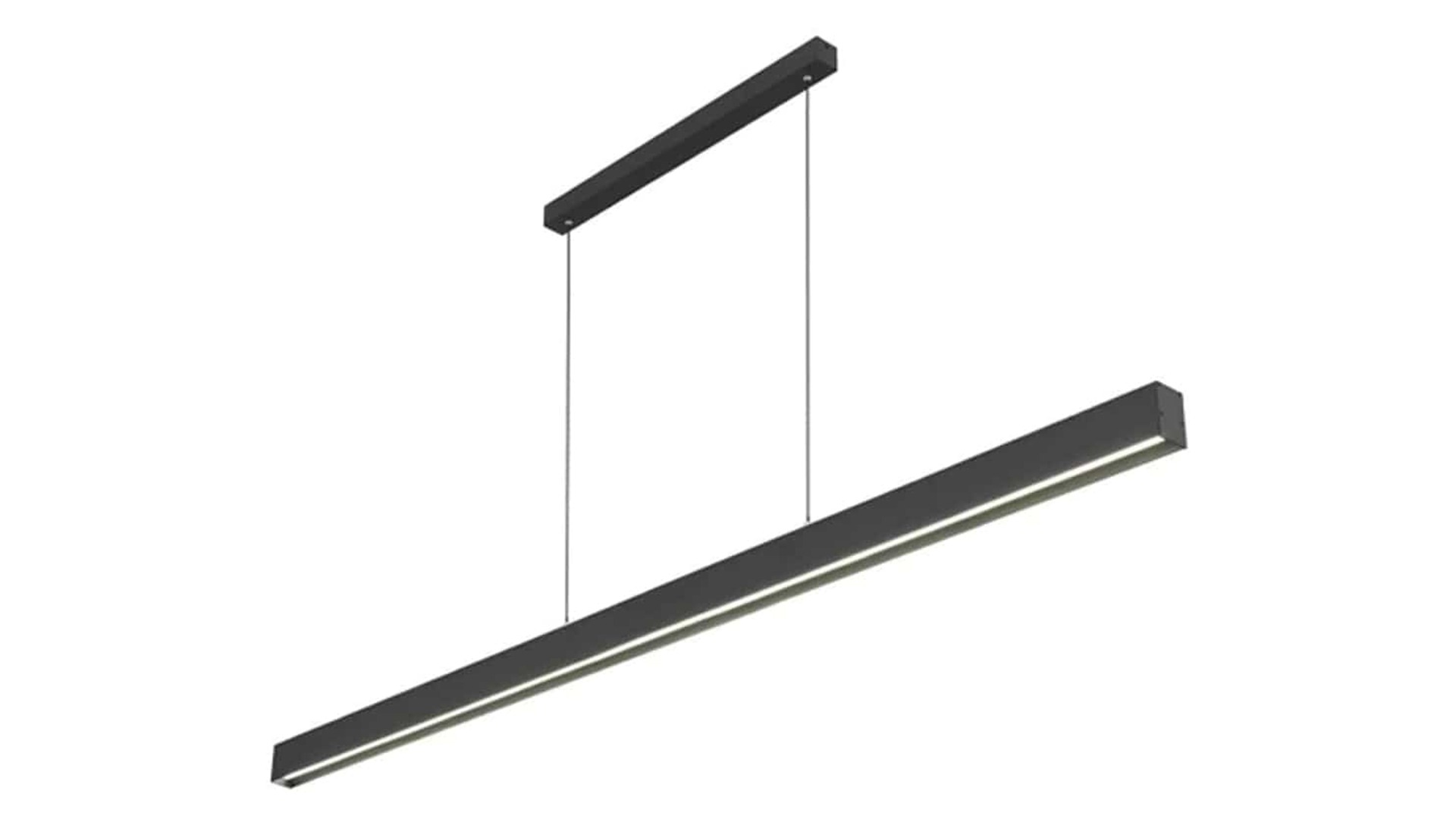
LED Hanging Beam Pendant Lighting
